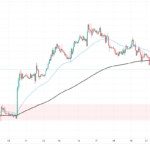
If you’re building a successful rental property business from the ground up, there is hardly any way around making buy-to-let investments.
Buying property with the intention of using them as buy-to-let investments is one of the most time-honoured real estate strategies. And it enjoys continuous popularity.
 According to recent estimates, over 4.5 million British households are living in buy-to-let properties. And over the last 12 months, people took out over £36 billion in buy-to-let mortgages.
According to recent estimates, over 4.5 million British households are living in buy-to-let properties. And over the last 12 months, people took out over £36 billion in buy-to-let mortgages.
If you’re thinking about investing in a buy-to-let property, here are four crucial things you have to know.
Getting a mortgage
Few people are in a position to start a rental business with their own capital. This is where buy-to-let mortgages come in.
Unlike standard residential loans, these mortgages see the anticipated rental income of the property as the primary income source. Your own salary may be taken into account, but only as a secondary factor.
In general, your expected rental income will have to be verified by independent sources. In order to get a mortgage, it will then typically have to exceed 145% of monthly interest payments.
Another difference between buy-to-let mortgages and residential loans: The down payment tends to be bigger. You can expect a deposit of at least 25%.
Outlining your strategy
Before you start investing, you have to outline your basic buy-to-let strategy. There are two main avenues to pursue.
One is to focus on capital growth. A mid- to long-term strategy means that you invest with a view to the increase in property values. Your rental income won’t cover initial outlays, but it will provide you with a running income against running costs.
Or, you can invest with an eye towards rental yield. This strategy focuses on generating income from rent. By definition, the rental yield is the income you generate from a property expressed as a percentage of that property’s value. Generally, good rental yields lie at around 5% a year, though they can reach up to 15%.
Targeting your tenants
When you’re deciding which buy-to-let properties to invest in, keep your ideal tenants in mind.
Are you targeting students? Young professionals? Families? Do you want to have short-term or long-term tenants?
All of this will influence your investment strategy, the type of property you invest in, and its location. Once you have decided on a target demographic, conduct research into their needs and preferences to make informed decisions.
Handling insurance
A final thing to consider for buy-to-let investments is how to handle associated risks – and insure yourself against them.
Typically, there are several kinds of insurance you will need once you acquire property and rent it out. Often these come in a landlord insurance package.
To start with, buildings insurance is usually required by buy-to-let mortgage lenders. This type of insurance covers you if the property is damaged or destroyed, for example in a fire or a storm.
Other central elements are landlord liability insurance (in case someone is injured on your property), contents insurance (for any furnishings you provide), and rent guarantee insurance (to secure your income stream in case your tenants fail to pay their rent).















